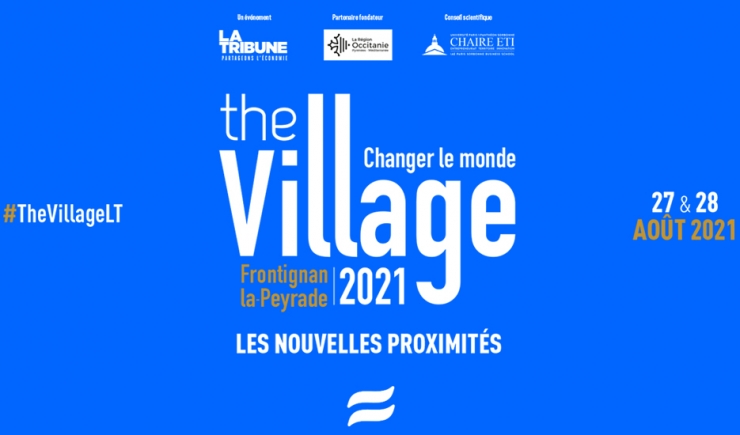Dominique Alba, Managing Director of Apur, will co-host the workshop "Proximity and new uses: what economic models for decarbonization, circularity, mobility, well-being?".

In a context of national emergence from the health crisis, where many are wondering about the future, the 2021 edition of The Village, organized by La Tribune in partnership with the Occitanie / Pyrénées-Méditerranée Regional Council and the Territory Innovation Entrepreneurship Chair ( ETI) of IAE Paris Sorbonne Business School, is placed under the theme of “New proximities”. She will be interested in what brings people, collectives, organizations and territories together.
For 2 days, 200 committed participants, producers of ideas - public and private decision-makers, entrepreneurs, intellectuals, teachers, researchers and national and international change-makers ..., will be gathered around workshops and round tables to reflect together on worlds rapidly changing.
Under the sponsorship of:
- Teresa Ribera, First VP Spain in charge of ecological transition *
- Jean François Rial, President of Voyageurs du Monde
Preliminary remarks:
- Launch of the New Proximity Manifesto, written by Vincent Kaufmann, Luc Gwiazdzinski, Didier Chabaud, Catherine Gall and Carlos Moreno, in LT and publication in La Tribune around mid - June.
- Activity with researchers / students and association around the wasteland identified with the Town Hall of Frontignan
New neighborhoods
By Vincent Kaufmann, École Polytechnique Fédérale de Lausanne, Luc Gwiazdzinski, Professor at ENSA Toulouse, Didier Chabaud, Catherine Gall, Carlos Moreno, - ETI Chair - IAE Paris | Paris1 Panthéon Sorbonne University
- “New proximities”? Rather than dealing with what separates, rather than focusing on the distances that grow or on the walls that stand between people, collectives, organizations and territories, we have chosen to focus on which brings us closer. We have chosen to use the key to entering proximities to help reflect on rapidly changing worlds.
- “Closeness”? The expression generally refers to "the Situation of a thing which is a short distance from another thing or someone, two or more things which are brought together" (CNRTL). The proximities we are talking about are multiple. They are spatial and are measured in meters, kilometers but also seconds or hours. They are social like those which make it possible to “form a group” and bring together people who are separated by hundreds of kilometers. They are cultural, but also cognitive, when they allow easy dialogue. They are digital when information and communication technologies allow real-time exchanges.
- "New" ? Because the proximities are in full reorganization with the health crisis. The Covid-19 has produced another relationship to time and space, that of confinement, curfews, exit bans, mandatory slowdowns and the rediscovery of slow activities but also unprecedented pressures on our space budgets -time. All of these transformations lead to questions about agitation and acceleration, here and elsewhere, but also about the meaning of the long term and the need to project oneself again despite uncertainty. These questions about the relationship to time, to the present, to the past, to the future existed before. The crisis revived them while pointing out the importance and the plural character of proximity.
- “New proximities” therefore like those at work in the new arrangements of time and space, which we propose to observe and document. New proximity of activities and actors in third places, wasteland, “infinite places” where new energies are born.
- New proximities also like those put forward around mobilizing figures such as those on a human scale of “the city of the 1/4 hour”, “the territory of the 1/2 hour”, of the “village” rediscovered, of the “ middle town ”resuscitated. New proximity to imagine our ways of living together and inhabiting the earth differently tomorrow. New neighborhoods that bring together players in resistance in ZADs or on roundabouts, those that allow the emergence of new places, sometimes marginal lifestyles. Proximities such as these convergences of approaches between individuals on societal choices linked in particular to ecological transition. Proximity like those which push us to defend again and again the idea of the city as a place of maximization of interactions.
- “New proximities” finally like those which encourage us to go beyond disciplinary boundaries to imagine and build this seminar which will bring together people from different academic or operational backgrounds from different countries for a meeting that will not be limited to observation and to analysis. Beyond the concepts, it will also make it possible to address the modalities of urban and territorial action, of citizen intervention and will adopt a critical approach on the reflections, projects and practices at work.
